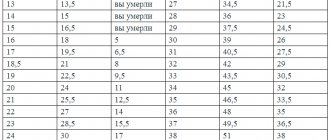Diet for PCOS
Polycystic ovary syndrome, or PCOS, is a disease that occurs in women and is associated with the formation of a large number of cysts in the ovarian area. Most often this disease is caused by problems such as:
- overweight, obesity;
- insulin resistance;
- imbalance in the hormonal system, which can be caused by various factors.
Any woman can experience PCOS and if action is not taken in time, this disease can lead to infertility and other health problems.
Today it is known that adipose tissue, along with the ovaries, is the place where extragonadal synthesis of sex hormones from androgens occurs. That’s why it’s so important not to be overweight, because this causes an imbalance in the hormonal system due to the fact that some hormones are produced more and others less.
Diet for polycystic ovary syndrome becomes a priority, since very often after weight normalization there is an improvement in the picture of the disease.
When metabolic processes in the body are restored by reducing the amount of excess weight, the body itself begins to fight PCOS and, accordingly, its symptoms.
Excess weight is only a risk factor; polycystic ovary syndrome can also occur in women with normal weight, but this does not mean that metabolic processes and the functioning of the endocrine system are not disrupted, so such patients are also prescribed a diet. Such a diet will not be aimed at losing weight, but at normalizing metabolic processes and eliminating deficiency conditions.
Basic principles of losing weight with PCOS
There is an opinion that when diagnosed with PCOS it is impossible to lose weight and a vicious circle results: in order to eliminate this condition it is necessary to lose weight, but it is impossible to lose weight. This statement is completely wrong.
Losing weight with this disease is possible, but it should be gradual so as not to cause stress to the body and with a well-designed diet to meet all the body’s needs.
The diet is prepared individually for each patient, based on the results of diagnostic studies, the patient’s medical history, symptoms and course of the disease.
The basic principles of nutrition for PCOS are:
- monitoring the glycemic index (GI) of foods. Foods with a high GI provoke a large release of insulin into the blood and due to subsequent reactions, insulin resistance may develop, which is a provoking factor for polycystic ovary syndrome. Most high-GI foods are high in carbohydrates, and controlling the GI can mimic a low-carb diet. However, it is not advisable to give up carbohydrates; it is necessary to maintain a balance of fats, proteins and carbohydrates in the body so that all metabolic processes occur in accordance with the norm;
- reducing the amount of animal fats entering the body. Excess animal fats in the body provokes an increase in cholesterol in the blood, which can clog blood vessels and impede blood flow through them, due to which nutrients and oxygen will not reach the organs in the required quantities, thereby disrupting metabolic processes in the body;
- attention is paid to the work of the intestines, and for its functioning and preservation of the intestinal microflora, which plays a large role in metabolic processes, it is necessary to consume a sufficient amount of fiber, which is contained in plant foods;
- adhere to the principles of fractional nutrition, avoid strong feelings of hunger.
In addition to nutrition, it is necessary to engage in physical activity, because it has a beneficial effect on the body and organism. Also, during physical activity, hormones are released that improve mood and increase overall tone. You can go swimming, jogging or long walks in the fresh air, fitness or home workouts; in general, all types of moderate physical activity are welcome.
Exercise and weight management for women with polycystic ovary syndrome
Like women without a diagnosis of polycystic ovary syndrome (PCOS), women with this diagnosis can benefit greatly from regular moderate-to-vigorous exercise.
Is treatment necessary for polycystic ovary syndrome?
We can talk about the treatment of PCOS only in the context of the expected benefits of treatment.
As with other medical problems and conditions, treatment is beneficial and necessary only if it can provide the patient with any significant benefit in terms of improving the quality or length of her life.
If we look at the treatment options offered to women with PCOS from this angle, we can say the following:
(1) There are no treatments that can completely eliminate the symptoms of PCOS.
(2) Available treatments can relieve the symptoms of PCOS to a greater or lesser extent. However, if a woman is not bothered by the symptoms of this condition and does not have significant ovulation problems (which could increase the risk of developing endometrial cancer), there is no need for special treatment.
If desired, women with PCOS can take advantage of the following options:
- Treatment to stimulate ovulation - if they are concerned about difficulties conceiving a child;
- Treatment with combined contraceptives - if they are concerned about irregular menstruation or excess hair growth;
- Treatment with antiandrogenic agents - if excess hair growth cannot be controlled in any other way.
(3) Like other women, women diagnosed with polycystic ovary syndrome can greatly benefit from dietary modification, regular exercise, and maintaining an optimal weight range. Even though these activities may provide some relief from PCOS, it is more appropriate to view them as “long-term self-care opportunities” rather than “treatment options.”
Treatment options that women with polycystic ovary syndrome can use to overcome difficulty conceiving a child or excess hair growth are presented in the article Smart Consumer's Guide to Health Care and Information: A Self-Care Plan for Women with Polycystic Ovarian Syndrome.
How can women with PCOS benefit from regular exercise and weight loss?
Some symptoms of PCOS - such as irregular menstruation - may become less pronounced over time, but the hormonal changes underlying the disorder appear to persist and may be exacerbated by other factors (poor diet, weight gain, lack of regular exercise). loads, age).
In this regard, all women with PCOS who would like to take care of themselves and reduce the risk of developing cardiovascular disease, diabetes and certain cancers in the future are advised to follow the following basic recommendations:
- Maintain optimal weight,
— Follow the principles of nutrition and physical activity, the protective effect of which has been scientifically proven,
— Pay attention to the possibility of monitoring glucose, cholesterol and blood pressure levels,
- Quit smoking.
There are complex bidirectional relationships between polycystic ovary syndrome and excess weight.
On the one hand, excess weight increases all manifestations of PCOS, including menstrual irregularities, ovulation disorders and excess hair growth. This likely explains why overweight women are diagnosed with PCOS slightly more often than women of normal weight.
On the other hand, by increasing insulin levels, PCOS can change the distribution of adipose tissue and predispose it to preferential deposition in the central part of the body and in the area of internal organs.
At the same time, the presence of PCOS in itself does not cause the development of excess weight, and the presence of this disorder does not make weight loss more difficult or impossible.
The effectiveness of weight loss in relieving or completely eliminating the symptoms of PCOS has been objectively proven in a number of studies. In overweight women, losing weight partially corrects disturbances in androgen and insulin metabolism and reduces the long-term risks associated with PCOS.
Because of this, for overweight women, losing weight to an optimal level is the first-line treatment for any symptoms of this condition.
Any other treatment to relieve symptoms of PCOS is recommended either at the same time as weight loss or if weight loss does not sufficiently relieve symptoms.
The effectiveness of weight management in relieving PCOS symptoms varies and is difficult to predict. One study found that in nearly a third of women, weight loss (by limiting energy intake to 1,200 to 1,400 kcal/day and engaging in regular exercise) over 6 months resulted in noticeable relief or complete resolution of PCOS symptoms. At the same time, despite the same weight loss, in some women weight correction led to the restoration of regular menstruation, while in others it did not.
Judging by the available data, to improve the regularity of menstruation, increase the frequency of ovulation and increase the likelihood of spontaneous conception, even a weight loss of 5-10% of body weight is sufficient.
For women with polycystic ovary syndrome, in whom weight loss does not relieve difficulty conceiving a child, this measure significantly increases the effectiveness of ovulation stimulation and reduces the need for special treatment for stimulation.
Other studies have shown that weight management in women with PCOS can normalize androgen levels. It is not clear whether this phenomenon has any clinical value. The effectiveness of weight loss specifically in eliminating unwanted hair growth remains poorly understood.
In all women, weight loss is associated with improvements in fat metabolism and glucose metabolism. This reduces the long-term risk of developing diabetes, which affects all overweight people.
For women with PCOS planning a pregnancy, losing weight significantly reduces the likelihood of complications during pregnancy.
The effect of regular exercise on PCOS has been studied in several small studies. The results of these studies showed that regular exercise can:
– improve physical fitness, endurance, mood and quality of life
- may have a certain positive effect in terms of reducing androgen levels and restoring regular ovulation.
The effectiveness of exercise specifically in relieving excess hair growth remains poorly understood and is likely to be small or non-existent.
Specific physical activity programs for women with PCOS have not yet been developed, however, based on data already accumulated in other areas of medicine, it can be assumed that women with PCOS should focus on the following minimum level of exercise:
(1) Perform exercises that increase cardiopulmonary endurance:
- at least 150 minutes per week if it is moderate intensity exercise or
- at least 75 minutes per week if it is high-intensity exercise.
(2) Perform exercises that increase the strength of major muscle groups:
- at least 2 workouts per week that include all major muscle groups.
(3) Limit daytime time spent without moving:
- time spent without movement (sitting, standing, lying down) should be no more than 7 hours a day.
Like other people, women with PCOS can reduce their long-term risk of cancer by losing weight and regular exercise.
For complete recommendations regarding PCOS, see: Self-Care Plan for Women with Polycystic Ovarian Syndrome.
Author: Alexander Kasapchuk.
Diet for polycystic ovary syndrome
Let's talk a little about the so-called “prohibited” and “allowed” foods during the treatment of PCOS. It is worth understanding that what enters our body directly affects our well-being and emerging diseases.
Generally speaking, the following products should be present in the diet:
- lean meat (beef, turkey, chicken);
- fish rich in protein and omega 3 polyunsaturated fatty acids (salmon, trout, salmon, pollock, hake, cod, etc.);
- chicken or quail eggs;
- vegetables and greens (it is better to eat at every meal for better absorption in the intestines);
- mushrooms;
- eat whole grain cereals or green buckwheat;
- give preference to flour products made from wholemeal rye flour;
- consume fats in the form of olive oil or avocado;
- olives and olives;
- introduce nuts and seeds into your diet (note that almost all nuts must be soaked before consumption);
- various types of berries;
- fruits with a little sugar;
- dairy products without sugar or with a minimal amount of it;
- herbal teas (before drinking tea from any herb, it is better to learn about its properties or consult a doctor; ginger tea usually has no contraindications and is beneficial for everyone);
- the use of spices that tend to relieve inflammation (turmeric, oregano, cumin).
Foods you should avoid in your diet:
- fatty meats;
- foods high in fat (margarine, heavy cream, etc.);
- processed foods (sausages);
- semi-finished products;
- milk chocolate and flour products;
- coffee and strong teas;
- foods high in starch.
All of the categories of foods described above are not part of a special diet for PCOS; sticking to eating “allowed” foods and avoiding “forbidden” ones should be part of the daily diet of all healthy people.
Several examples of menus for every day for a diet for polycystic ovary syndrome are displayed in the table.
| Menu No. 1 | |
| Breakfast | Low-fat cottage cheese with the addition of nuts or fruits. |
| Lunch | Crispbread and fruits (banana, apple) |
| Dinner | Fish, baked, oven-baked or steamed with vegetables. You can have juice without added sugar. |
| Snack | Vegetable salad with egg. |
| Not a late dinner | Cutlets or steamed meat. |
| Snack | Low-fat fermented milk product (kefir, yogurt). |
| Menu No. 2 | |
| Breakfast | Oatmeal or millet porridge with a small amount of butter or fruit. |
| Lunch | Avocado toast with egg. |
| Dinner | Vegetable soup. Garnish of green buckwheat and boiled chicken breast. |
| Snack | Lenten cookies. |
| Not a late dinner | Stewed cabbage with vegetables. |
| Snack | Homemade jelly. |
The menu for every day when dieting due to PCOS should be compiled based on your preferences and individual ratio of KBJU.
Polycystic ovary syndrome. 4 questions to the gynecologist
Very often the problem is caused by polycystic ovary syndrome. How is this endocrine syndrome detected? Is it possible to be cured so that the long-awaited baby can finally appear in the family? A gynecologist-reproductologist answers your questions.
Polycystic ovary syndrome and pregnancy
1. I read that polycystic disease is the growth of a large number of follicles in the ovaries. Logically speaking, more eggs should appear from them. Why then does pregnancy not occur?
The fact is that with polycystic disease, up to fifty small follicles grow in the ovary (on ultrasound they look like a bunch of grapes). But the female body does not have enough strength to grow so many follicles, so none of them reaches the required size. Ovulation does not occur - that is, the egg does not mature, which will be ready for fertilization by sperm. While during a normal menstrual cycle, a woman should develop only a few follicles, and most often only a single one will produce a full-fledged egg, ready for procreation.
Symptoms of polycystic ovary syndrome
2. I am bothered by the mustache above my upper lip. I had an appointment with a dermatologist. It was he who suspected polycystic disease. It turns out that hirsutism is also a symptom of polycystic ovary syndrome?
It is not for nothing that doctors call the problem a syndrome, since it is a combination of many symptoms. Often women complain to the gynecologist about irregular and painful menstruation. They can be either meager or, on the contrary, excessively abundant. They may not come for up to six months. Patients feel pain in the lower abdomen and chest. But there are other symptoms that make you suspect polycystic disease. For example, hirsutism (when hair grows on the face, like a man) or alopecia (hair loss, receding hairline), acne (pimples), hyperpigmentation. Loss of energy and bad mood are also characteristic of polycystic disease. Sometimes such patients snore. All this is evidence of hormonal imbalance, an increase in male sex hormones in the blood.
How to detect polycystic ovary syndrome?
3. The doctor prescribed me to take hormone tests. I did them in the first half of the cycle, and took the next ones in the second month. The gynecologist scolded me and said that it was important to do them in one cycle. It seems to me that the doctor is being picky. And another question: are additional examinations needed to diagnose polycystic disease?
The doctor is right: discipline is important here when taking tests. The gynecologist needs to look at the hormone levels in the first and second phase of one cycle, because the cycles are different from each other. One passes without the egg leaving the follicle at all. In another, ovulation may occur later or earlier than the middle of the cycle (by the way, even with polycystic disease), which, naturally, will affect the hormonal background.
The tests will show high levels of male sex hormones in the blood - testosterone, 17-hydroxyprogesterone, DHEA sulfate, luteinizing hormone (LH) and glucose.
It is also necessary to do an ultrasound, confirming the increase in the volume of the polycystic ovaries and the presence of small follicles in them. An ultrasound examination can show whether there is a main follicle. Additional studies include MRI or X-ray examination of the sella turcica.
Diet for polycystic ovary syndrome
4. I am a fairly plump woman. The doctor said that I definitely need to lose excess weight, only then will I be able to get pregnant. But what is the connection between fatness and fertility?
Doctors recently came to the conclusion that insulin resistance and increased blood glucose levels are most often to blame for the occurrence of polycystic disease. The ovaries and adrenal glands immediately sense the hormonal imbalance and try to produce androgens. Of course, with an excess of male hormones, the egg cannot mature. Therefore, when diagnosing polycystic disease, a woman needs to undergo the same tests as when diagnosing diabetes.
An increase in insulin levels in the blood most often occurs in women suffering from male-type obesity - when fat tissue is concentrated not on the thighs, but on the abdomen. With this type of obesity (called “apple”), the ratio of waist to hip volume is greater than the index 0.8.
If glucose levels are high, a woman should go on a diet that is usually prescribed for diabetics. The doctor prescribes a medicine to lower sugar levels and a drug to reduce appetite. If a woman follows the instructions and loses excess weight, insulin sensitivity is restored in the body. Accordingly, the hormonal levels are normalized, the ovaries work at full capacity, producing full-fledged follicles.
A woman who has lost just 5 percent weight can see noticeable results. In 80 percent of such patients, ovulation is restored.
In parallel with the diet, the woman takes hormones that reduce the level of androgens in the ovaries. It will take three months for the indicators to return to normal, this is explained by the fact that the hormonal background needs 90 days to renew itself. Pregnancy often occurs during treatment.
Read articles
Why are children not born?
Why did the hormonal imbalance occur?
5 reasons for miscarriage and premature birth
When doctors and patients are mistaken
Diet for PCOS for weight loss
A diet for weight loss should be based on the daily calorie consumption and activity of the patient. It is necessary to monitor the balance of proteins, fats and carbohydrates so that the skin, hair and internal condition remain normal. In everything, moderation and a varied diet are necessary for successful weight loss, which will delight a woman.
After losing weight, the following processes improve:
- sexual desire and libido;
- the menstrual cycle is restored and ovulation occurs;
- the ability to get pregnant and successfully carry a child;
- The appearance of the body and skin improves, acne and acne may disappear.
To achieve the best results, the patient should be comfortable, the diet should not cause negativity and unnecessary stress.
Who treats PCOS
A gynecologist or endocrinologist can treat PCOS with diet and other methods.
Endocrinologist Georgy Nikitich Romanov treats polycystic ovary syndrome in women in his medical practice. This specialist conducts paid online consultations with patients, interprets diagnostic results, advises on nutrition, medications, etc. Romanov Georgy is a candidate of medical sciences with more than 20 years of work experience. To schedule an online consultation with him, click here.
PCOS and pregnancy: answers to frequently asked questions
The normal functioning of a woman's reproductive system depends on many factors. In particular, the possibility of successful conception in most cases depends on previous or existing diseases. These include polycystic ovary syndrome (PCOS), a gynecological disease that is increasingly being diagnosed by doctors today. And therefore, many women are interested in how compatible PCOS and pregnancy are?
Causes of the disease
Unfortunately, modern medicine has not yet fully elucidated the causes of this disease. But at the same time, there are a number of factors that are prerequisites for the appearance of polycystic ovary syndrome in a woman:
- obesity;
- cases of interrupted pregnancy;
- complications during pregnancy and childbirth;
- chronic infectious diseases;
- bad heredity.
These are the most common factors that cause PCOS, but there are many others that are not so common. This is why it is so important to undergo preventive examinations on time every year.
PCOS: symptoms and signs
Polycystic ovary syndrome or Stein-Leventhal syndrome has the following symptoms
, which take place in most cases:
- cycle failures (various intervals between cycles, heavy bleeding, etc.);
- hirsutism (excessive hair growth where it should not be);
- infertility;
- oily skin, acne;
- lowered voice timbre;
- hormonal imbalances;
- enlarged ovaries with many cysts.
A little less frequently, PCOS can be accompanied by overweight (sometimes morbid), diabetes (due to the influence of altered hormonal levels), fibrocystic mastopathy (the appearance of compactions of fibrous tissue in a woman’s mammary glands).
Diagnosis of the disease
Any diagnosis needs confirmation. In this case, the following examinations are used for these purposes:
1. Ultrasound. With its help, you can clearly verify the existing changes in the structure of the ovaries (changed size of the organ with an outer wall that is too thick, increasing in size, many cavities filled with fluid). 2. Blood test. The hormonal background is examined - with PCOS, there is a high level of luteinizing hormone and male sex hormones (in particular testosterone), while during the second phase of the cycle progesterone may be too low. 3. Biochemical blood test. Allows you to identify metabolic disorders by increased levels of fats (triglycerides, cholesterol, etc.), glucose. 4. Biopsy. Used to study endometrial samples when the presence of endometrial tumors of the genital organs is suspected. In most cases, the procedure is necessary to determine the possibility of combining PCOS and pregnancy.
Treatment methods for polycystic ovary syndrome
Many women wonder: how to get pregnant with PCOS? First of all, this requires choosing the right course of treatment and getting rid of the severe consequences of the pathology. First, you should normalize your diet - saturate your diet with fruits and vegetables, eat only lean meats and fish, exclude confectionery and homemade baked goods. In medical practice, there are cases when, after losing weight by 10% of the weight before the diet, a woman’s menstrual cycle was restored. After this, you can try to combine PCOS and pregnancy by stimulating ovulation or IVF. Eating restrictions can be supplemented with physical activity, which will reduce insulin sensitivity and strengthen the body's muscle tissue. It is best to consult your doctor about a set of exercises after proper examination.
To effectively treat polycystic disease, in addition to a special diet and physical exercise, medication or surgery is used. In the first case, taking medications helps create conditions for the maturation and release of a healthy egg, which can later be fertilized. If a woman is not planning a pregnancy in the near future, then, first of all, they try to get rid of the external manifestations of the syndrome, normalize hormonal levels and metabolism. Therefore, in this case, hormonal contraceptives can be prescribed, which should be taken only after consultation with a doctor.
How to get pregnant with PCOS?
It should be borne in mind that with polycystic disease, conception is possible, but there is a certain risk of complications. These include:
- chronic fetal hypoxia;
- threat of miscarriage;
- placental insufficiency;
- miscarriage or fetal death.
Therefore, it is best to eliminate all the negative consequences of the syndrome through a well-designed course of treatment. Progesterone, Metformin, Clostilbegit, Clofimene-citrate, Humegon, Pergonal and others are most often used as medications. All listed drugs and their dosage are prescribed by the attending physician.
If conservative treatment does not help and the question of how to get pregnant with PCOS has not been resolved, then they resort to surgery through minilaporoscopy or ovarian drilling. However, even such an intervention does not guarantee the possibility of secondary polycystic disease.
Women should understand that only a professional gynecologist-endocrinologist can combine PCOS and pregnancy. Therefore, contact our clinic in Petrozavodsk, where competent doctors will perform a high-quality examination using modern equipment and develop tactics to combat polycystic ovary syndrome on an individual basis.
conclusions
The diet for polycystic ovary syndrome should be prepared by a specialist based on the patient’s individual parameters. It should be comfortable and varied. PCOS is not cured in a month - it is a long, painstaking work of the patient on himself and his daily habits. A diet for PCOS not only helps reduce the symptoms of the disease and restore the woman’s hormone balance, but also improves her appearance: the body becomes toned, physical activity and endurance increase, problems such as brittle nails, hair loss, constant fatigue, apathy, etc. .









